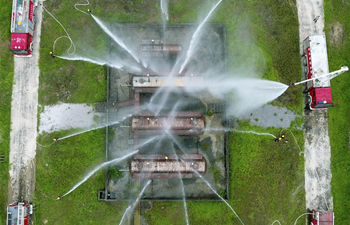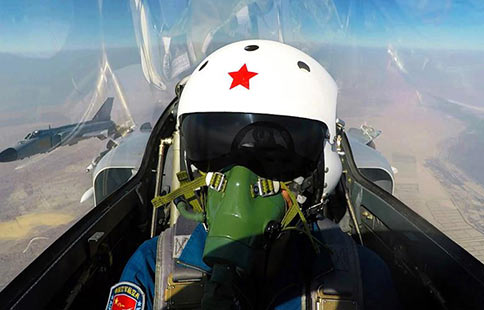LOS ANGELES, Sept. 13 (Xinhua) -- The U.S. National Aeronautics and Space Administration (NASA)'s Cassini spacecraft was on final approach to Saturn as mission navigators confirmed that it was on course to dive into the planet's atmosphere on Friday.
"Final approach: the spacecraft is on course to dive into Saturn's atmosphere Sept. 15," Cassini's team said in its twitter on Wednesday.
Because Cassini was running low on fuel, the spacecraft was ending its 13-year tour of the Saturn system with an intentional mission-ending plunge into the atmosphere of Saturn on Friday to ensure Saturn's moons, in particular Enceladus, remain pristine for future exploration.
The long-lived spacecraft's fateful dive was the final beat in the mission's Grand Finale, which began in late April, through the gap between Saturn and its rings. No spacecraft has ever ventured so close to the planet before.
According to the mission's final calculations, after beginning its descent into Saturn's upper atmosphere, the spacecraft was expected to lose radio contact with Earth at 4:55 a.m. PDT (1155 GMT) on Friday.
Cassini will enter Saturn's atmosphere at an altitude of about 1,915 km above the planet's estimated cloud tops, where the air pressure is 1-bar, equivalent to sea level on Earth.
During its dive into the atmosphere, the spacecraft's speed will be approximately 113,000 km per hour. The final plunge will take place on the day side of Saturn.
Before contact is lost, eight of Cassini's 12 scientific instruments will be operating. In particular, the spacecraft's ion and neutral mass spectrometer, which will be directly sampling the atmosphere's composition, will potentially offer insights into the giant planet's formation and evolution, according to NASA.
"The spacecraft's final signal will be like an echo. It will radiate across the solar system for nearly an hour and a half after Cassini itself has gone," Earl Maize, Cassini project manager at NASA's Jet Propulsion Laboratory, said in a statement.
"Even though we'll know that, at Saturn, Cassini has already met its fate, its mission isn't truly over for us on Earth as long as we're still receiving its signal," Maize said.
On Thursday, other Cassini instruments will make detailed, high-resolution observations of Saturn's auroras, temperature, and the vortices at the planet's poles.
Cassini's imaging camera will take a last look at the Saturn system on the day before the plunge and will be off during this final descent.
Launched in 1997, Cassini has been touring the Saturn system since arriving there in 2004. During its journey, Cassini has made numerous dramatic discoveries.
















